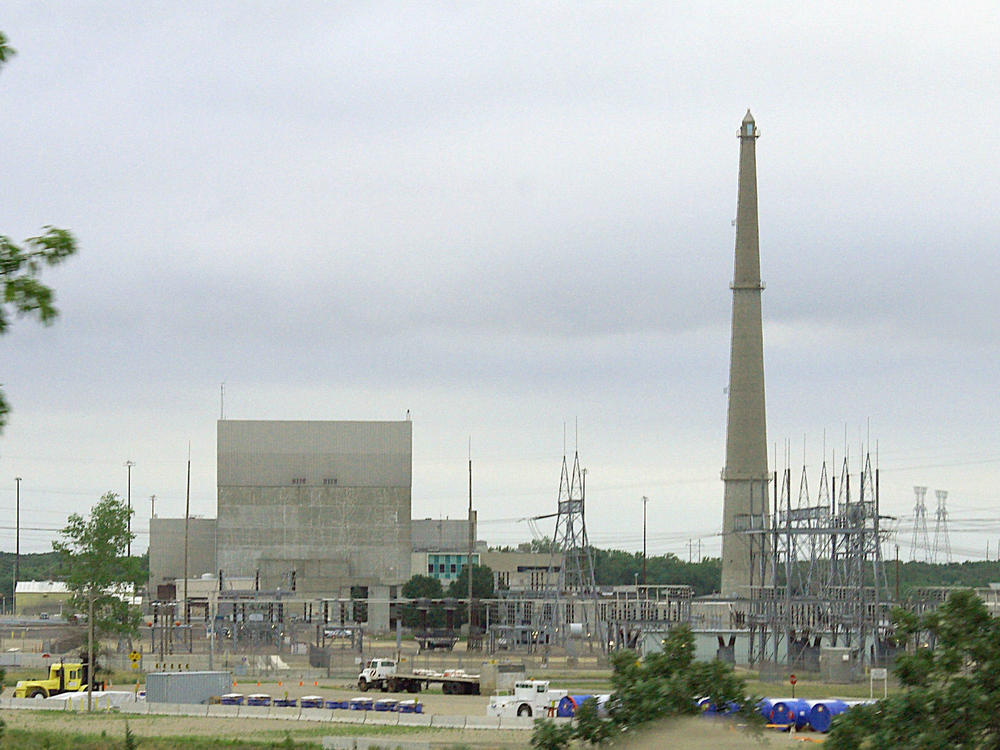Section Branding
Header Content
A nuclear power plant leaked contaminated water in Minnesota. Here's what we know
Primary Content
Minnesota officials are monitoring the cleanup of a 400,000 gallon leak of contaminated water from a nuclear power plant in the city of Monticello run by the energy giant Xcel Energy. Officials said there is no danger from the leak.
The leak was detected nearly four months ago and reported to state and federal regulators. The federal Nuclear Regulatory Commission posted a notice publicly at the time, but the company and state agencies did not notify the general public until last week.
"Xcel Energy took swift action to contain the leak to the plant site, which poses no health and safety risk to the local community or the environment," the company announced in a statement on Thursday. Ongoing monitoring has confirmed that the leak "is fully contained on-site and has not been detected beyond the facility or in any local drinking water," the company said.
Xcel confirmed the leak of water containing tritium in November 2022 and notified officials the same day, according to the company's announcement. Officials attributed the leak to a water pipe running between two buildings at the plant site. The amount of contaminated water that leaked out is enough to fill an Olympic-sized swimming pool about 60% full.
Xcel is based in Minneapolis, Minn., and operates in eight states around the U.S. Its two nuclear power plants are both based in Minnesota. Monticello is about 40 miles northwest of Minneapolis and has a population of about 15,000 people.
Because there was no immediate threat to the public's health and safety, "we focused on investigating the situation and containing the affected water in concert with our regulatory agencies," Xcel spokesperson Lacey Nygard said in an email to NPR when asked why there was a nearly four month delay in notifying the public. "We are now at a place where we can share with the public not only what has already been done, but what we're going to do next. This timing allows us to provide the most accurate and complete understanding of the situation."
In 2009, Xcel's same Monticello plant had a small tritium leak, which Nygard said was smaller in scale than the 2022 leak and came from a sump rather than a pipe.
"Many operating nuclear plants have had some level of tritium leakage at some point during their operations," Nygard said.
Michael Rafferty, a spokesperson for the Minnesota Pollution Control Agency, told NPR the agency waited to get more information before announcing it to the public.
"Minnesota state agencies are deeply committed to our role in protecting human health and the environment and take seriously our responsibility to promptly inform the public when a situation presents any sort of current or imminent risk," Rafferty said. "The situation at Xcel Energy's Monticello site did not — and still does not — present an imminent threat to residents' health."
Officials with the federal Nuclear Regulatory Commission did not immediately respond to requests for comment. A spokesperson for the NRC, Victoria Mitlyng, told a local news station that the public's concern was "very understandable," and emphasized that "the public in Minnesota, the people, the community near the plant, was not and is not in danger."
What is tritium?
Tritium is a naturally occurring form of hydrogen that emits a weak form of radiation, which can't travel far in air or penetrate skin, according to the NRC.
Tritium is also a byproduct of producing electricity in nuclear power plants, and the dose of tritium that comes from nuclear power plants is much lower than exposures from radiation present in the natural environment, according to the NRC. Xcel said the tritium levels in the leaked water were below NRC safety thresholds.
"Everyone is exposed to small amounts of tritium every day, because it occurs naturally in the environment and the foods we eat," according to an NRC fact sheet.
Any radiation exposure can pose some health risk, including increased occurrence of cancer. The risks of exposure are linear, meaning lower levels of radiation pose lower risk.
Eating or drinking food or water with tritium in it is the most common way it enters the body. It can also be absorbed through the skin. About half of it leaves the body within 10 days after exposure.
The cleanup will take months
Xcel says it has recovered about 25% of the tritium-contaminated water that leaked, and recovery efforts will continue over the course of the next year.
"While this leak does not pose a risk to the public or the environment, we take this very seriously and are working to safely address the situation," Chris Clark, president of Xcel Energy–Minnesota, North Dakota and South Dakota, said in the company's statement. "We continue to gather and treat all potentially affected water while regularly monitoring nearby groundwater sources."
To contain the leak, the water is being diverted to a treatment system inside the plant, which prevents water from leaving the plant. Xcel said it also inspected all of its piping to ensure this wasn't also happening elsewhere in the facility.
The Minnesota Pollution Control Agency said Xcel is considering building above ground storage tanks or installing a retention pond to store the water containing tritium that has been recovered, as well as considering treatment, reuse and disposal options. Minnesota regulators will review any options the company selects, MPCA said.
"Our top priority is protecting residents and the environment, and the MPCA is working closely with other state agencies to oversee Xcel Energy's monitoring data and cleanup activities," said Kirk Koudelka, MPCA assistant commissioner for land and strategic initiatives. "We are working to ensure this cleanup is concluded as thoroughly as possible with minimal or no risk to drinking water supplies."
Copyright 2023 NPR. To see more, visit https://www.npr.org.

